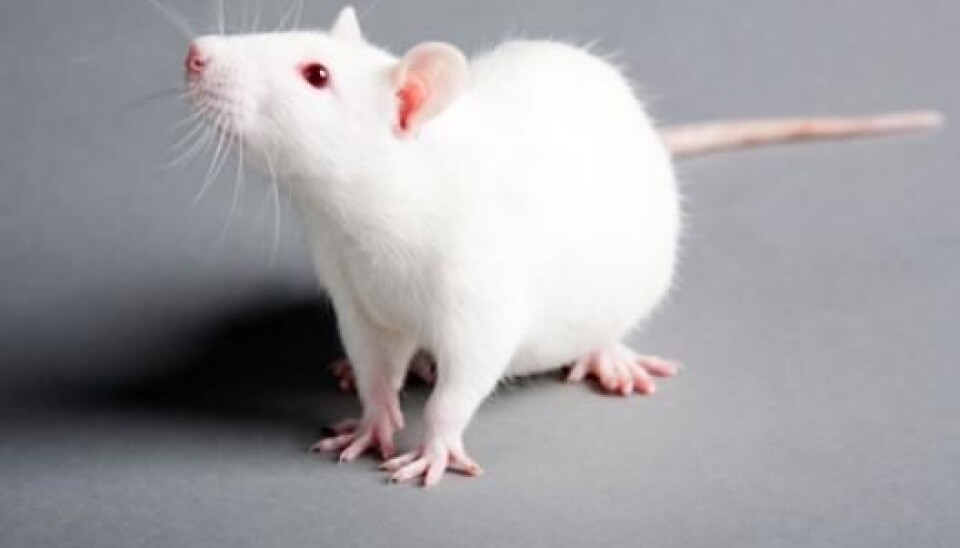
BPA can harm infant brains
The industrial chemical bisphenol A (BPA), which is used to make plastics, can impair brain development in newborn mice. The damage can last a lifetime.
BPA is used to manufacture various types of plastic and it makes its way into the environment. Small concentrations are now found in nature and even in breast milk.
A mounting influx of new research evidence reveals the harmful effects of BPA.
The chemical is used among other things in the manufacturing of water bottles and common electric products.
This summer Norway banned its use in baby bottles, after a similar ban by the EU.

Infants
Researchers at the University of Uppsala in Sweden have now demonstrated that mice can suffer permanent brain damage upon being exposed to BPA when newly born.
The end of gestation and the first days after birth are crucial to brain development. Mice that had been subjected to various doses of BPA as newborns proved to be less adaptable to a new environment later in life than other laboratory mice.
Normal mice that were removed from their cages and placed in a new one generally spent about 20 minutes running around and accommodating themselves to their new surroundings before eventually settling down.
Mice that were exposed to BPA failed to adjust and continued to explore the new cage for the entire hour the experiment lasted.
“They couldn’t process information from lights, sounds and smells that indicated the new environment was safe,” explains researcher Henrik Viberg at the Uppsala University’s Department of Environmental Toxicology.
Permanent change
The mice were given BPA when they were 10 days old and the first experiments were conducted two months later. The experiments were repeated, with the same results, when the mice reached an age of five months.
Viberg and his colleagues have published their results in the journal Toxicology. They report that the problem with reduced adaptability probably lasts a lifetime.
The Swedish researchers found that the adverse effects intensified as doses of bisphenol A were increased.
They also studied the reaction of mice that were exposed to nicotine.
Nicotine works like the neural transmitter acetylcholine, which causes hyperactivity. Normal mice reacted to nicotine, but those which were subjected to BPA displayed no change in behaviour.
Viberg interprets this to mean that the natural reaction pattern to the chemical compound fails to function among mice that have been exposed to BPA.
BPA can impair learning, memory and cause a change in behaviour.
High doses
The results of this new study comply with a number of signs that BPA might be harmful to humans. But the results cannot be directly transferred from mice to humans.
The lab mice received doses that were much larger in proportion to their body mass than the doses children and adults encounter in daily life.
On the other hand, the researchers in this study looked at the effect of a single exposure; in other words the test mice were only given BPA once.
In our environment children and adults can be exposed to large amounts of BPA over long periods.
Long-term impact
Bisphenol A can leak out of plastic bottles and food packaging and has been found in household dust.
“A child can be affected by BPA prenatally, and after birth through breast milk, foods and by breathing in dust,” says Viberg.
The critical period for human brain development is from the end of pregnancy until the child reaches an age of two.
Viberg doesn’t want to exaggerate fears about BPA as a single compound. But he points out that we don’t know enough about the accrued and combined effect of BPA along with other environmental toxins that we come in contact with.
Chemical cocktail
His research colleagues have formerly seen similar effects on the brains of newborns upon exposure to environmental toxins such as bromated flame retardants, DDT and organic compounds.
“The way it looks now I don’t think bisphenol A is so dangerous on its own, but it’s disturbing that the effect appears similar to the impact of other environmental toxins,” says Viberg.
Bisphenol A is used in polycarbonates and other types of plastics. Its industrial production was started in the 1950s by chemical industries in West Germany and the USA.
Brain functions are not the only health hazard. BPA has other potential damaging effects and other studies have focused on its impact on human fertility.
--------------------------------------------------
Read the article in Norwegian at forskning.no
Translated by: Glenn Ostling




